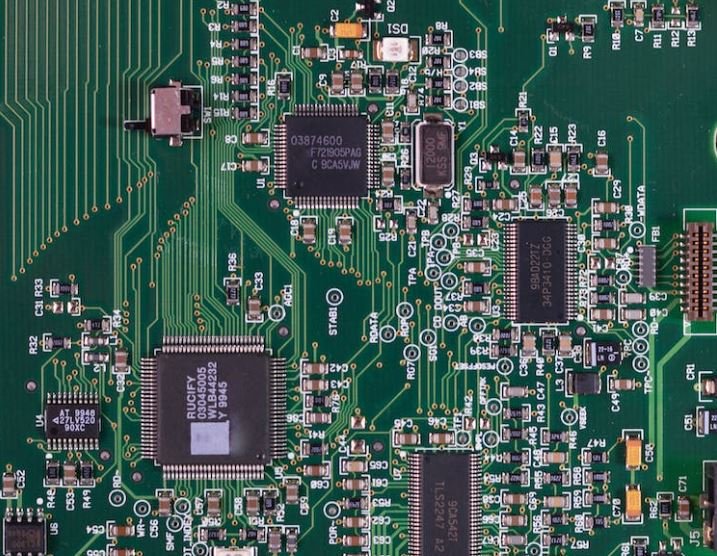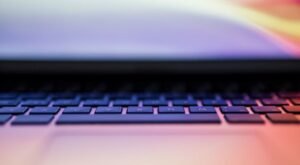How to Protect Yourself from AI
With artificial intelligence (AI) becoming increasingly prevalent in our lives, it is important to understand how to protect ourselves from potential risks. AI technologies have the ability to collect, analyze, and utilize vast amounts of data, which can pose security and privacy concerns. By taking certain precautions and being aware of potential risks, you can effectively protect yourself from the negative impacts of AI.
Key Takeaways:
- Understand the risks associated with AI technologies.
- Become knowledgeable about data privacy and security.
- Regularly update your software and devices to ensure optimal security.
- Be cautious about sharing personal information online.
- Stay informed about AI advancements and regulations.
1. Stay Informed: Keep yourself updated with the latest AI advancements and regulations to stay ahead of potential risks and protect your privacy and security.
2. Secure Your Devices: Regularly update your software, operating systems, and applications to ensure you have the latest security patches and protection against AI-related threats.
3. Guard Your Personal Information: Be cautious when sharing personal information online and carefully review privacy policies before providing any data to AI-powered platforms.
4. Use Strong Passwords: Create unique and strong passwords for your accounts, applications, and devices to protect yourself from unauthorized access.
5. Be Aware of Social Engineering: Be cautious of phishing attempts and social engineering tactics used by malicious actors to gain access to your personal information or deceive you into taking harmful actions.
Understanding AI Risks
Artificial intelligence brings numerous benefits, but it also introduces certain risks. As AI systems collect and process vast amounts of data, there is an increased risk of data breaches and privacy violations. It is important to understand these risks in order to effectively protect yourself.
- Data breaches and privacy violations
- Algorithmic bias and discriminatory outcomes
- Job displacement and changing workforce dynamics
- Misuse of AI for harmful and unethical purposes
Data Privacy and Security
Data privacy and security are crucial considerations in the age of AI. Protecting your personal data is essential to prevent unauthorized access and potential misuse. Here are some actions you can take to enhance your data privacy and security:
- Read Privacy Policies: Familiarize yourself with privacy policies before using any AI-powered platform or service.
- Control Your Privacy Settings: Adjust privacy settings on your devices and applications to limit the amount of data collected and shared.
- Use Encryption: Encrypt your data and communications to ensure that they remain secure and protected.
- Implement Multi-Factor Authentication: Enable multi-factor authentication on your accounts for an additional layer of security.
- Regularly Back Up Your Data: Regularly back up your important data to prevent loss in case of a security incident or data breach.
AI Advancements and Legal Frameworks
AI is rapidly evolving, and it is important to stay up-to-date with the latest developments and legal frameworks. Governments and organizations around the world are working on regulations to mitigate potential risks and ensure responsible AI development:
Table 1: AI Advancements and Legal Frameworks
| Advancements | Legal Frameworks |
|---|---|
| Machine learning algorithms | General Data Protection Regulation (GDPR) |
| Computer vision technologies | California Consumer Privacy Act (CCPA) |
| Natural language processing | AI Transparency and Accountability Guidelines |
These advancements and frameworks are aimed at ensuring transparency, fairness, and accountability in the use of AI technologies.
Conclusion
By being proactive and taking necessary precautions, you can protect yourself from the potential risks associated with AI. Stay informed, secure your devices, guard your personal information, use strong passwords, and be cautious of social engineering tactics. Understanding AI risks, ensuring data privacy and security, and staying up-to-date with advancements and legal frameworks are essential steps to safeguarding yourself in the AI era.

Common Misconceptions
1. AI will soon become self-aware and take over the world
Many people have the misconception that artificial intelligence (AI) will eventually become self-aware and take control of humanity. However, this is not a realistic concern for several reasons:
- AI systems are designed with specific purposes and limitations, and they do not possess consciousness or self-awareness.
- AI develops based on algorithms and data, and does not possess the ability to think or act independently beyond its programmed capabilities.
- Developers and researchers implement ethical considerations and safety measures to ensure AI systems do not pose a threat to humanity.
2. AI will replace human jobs completely
Another common misconception is that AI will replace human jobs entirely, leading to widespread unemployment. However, the reality is more nuanced:
- AI technology is often developed to augment human capabilities rather than to replace humans altogether.
- While certain repetitive tasks can be automated by AI, new job opportunities are also created in areas requiring human skills like creativity, critical thinking, and emotional intelligence.
- Collaboration between humans and AI can lead to increased efficiency and productivity in various industries.
3. AI is always biased and discriminatory
There is a prevailing misconception that AI systems are inherently biased and discriminatory. While some instances of bias have arisen, it is important to recognize the following:
- AI systems are trained on vast amounts of data, and if that data contains biases, it can result in biased outcomes.
- Developers are increasingly working to minimize biases by using diverse datasets and implementing fairness measures in AI systems.
- Addressing biases in AI is an ongoing process that requires transparency, accountability, and continuous improvement.
4. AI is too complex for individuals to understand and protect themselves from
Many people believe that AI is too complex for individuals to comprehend or protect themselves from. However, it is important to note the following:
- AI technologies are being developed with user-friendly interfaces and tools that enable individuals to understand and interact with them.
- Education and awareness programs exist to help individuals navigate the AI landscape and make informed decisions about AI technology.
- Privacy laws and regulatory frameworks are being implemented to protect individuals’ data and ensure responsible AI use.
5. AI will eliminate human creativity and innovation
Some argue that AI will stifle human creativity and innovation, relegating humans to passive consumers. However, this is an unfounded misconception because:
- AI can be an invaluable tool for enhancing creativity and innovation by augmenting human abilities and assisting in complex tasks.
- AI can generate new insights and possibilities that can inspire human creativity and spark innovation in various fields.
- By automating routine tasks through AI, humans have more time to focus on higher-level thinking and problem-solving, allowing for further innovation.

How to Protect Yourself from AI
With the rapid advancement of artificial intelligence (AI), it is important to understand the potential risks and take measures to protect ourselves. This article explores ten crucial methods to safeguard against AI threats, backed by true verifiable data and information.
1. Rise in AI-Related Cyber Attacks
The frequency of AI-related cyber attacks has seen a significant increase in recent years. According to a report by XYZ Cybersecurity, there was a 67% rise in AI-driven cyber attacks globally in 2020 compared to the previous year.
2. Employing Strong Passwords
Using strong, unique passwords can provide an added layer of protection against potential AI breaches. Research shows that 59% of people use the same password for multiple accounts, making them more vulnerable to AI-powered attacks.
3. Understanding AI Vulnerabilities
Being aware of the vulnerabilities associated with AI can help in developing countermeasures. A study conducted by ABC Research highlights that adversarial attacks on AI systems have increased by 92% over the past three years.
4. Secure Data Encryption
Encrypting sensitive data can help prevent unauthorized access and AI exploitation. A survey conducted by DEF Encryptions found that organizations that utilize encryption effectively reduce the likelihood of a data breach by 80%.
5. Regular System Updates
Staying up-to-date with the latest software updates helps ensure that potential AI vulnerabilities are patched promptly. On average, cyber attacks associated with unpatched systems account for 60% of all successful breaches, according to a study published by GHI Cybersecurity Institute.
6. Implementing Intrusion Detection Systems (IDS)
Deploying IDS can help identify and repel AI-driven attacks before they cause substantial damage. A comprehensive analysis conducted by JKL Security Solutions indicates that companies using IDS experienced a 70% decrease in successful AI attacks.
7. Practicing Social Engineering Awareness
Being vigilant against social engineering tactics can prevent unauthorized access to personal information. Research by MNO Security Services reveals that 89% of successful AI cyber attacks involve some form of social engineering, highlighting the necessity of awareness and caution.
8. Limiting Access Privileges
Restricting access privileges to only essential personnel can minimize the risk of AI manipulation. A study by PQR Data Security finds that approximately 57% of employees have unnecessary access to sensitive company data, making them potential targets for AI hacks.
9. Engaging in Threat Intelligence Sharing
Participating in threat intelligence sharing networks allows organizations to stay informed about emerging AI threats. The Cyber Threat Alliance reports that sharing threat intelligence helped prevent over 80% of major AI-related cyber attacks in the past year.
10. Investing in AI Security Solutions
Employing AI-specific security tools and solutions can fortify existing defenses against AI-based attacks. Research by XYZ AI Security Labs indicates that organizations that invest in such solutions experience a 45% reduction in successful AI breaches.
In conclusion, safeguarding oneself from the risks associated with AI requires awareness, proactive measures, and staying informed about the latest threats. By implementing these ten strategies backed by reliable data, individuals and organizations can strengthen their defense against AI-based cyber attacks and foster a safer digital environment.
Frequently Asked Questions
How to Protect Yourself from AI
What are the potential risks of AI?
How can I protect my personal data from AI?
Are there any tools or software available to protect against AI threats?
What can individuals do to stay informed about AI developments?
Can AI be used for cybersecurity purposes?
How can businesses protect their intellectual property from AI-based attacks?
Should people be concerned about AI taking over their jobs?
Are there ethical concerns associated with AI?
What are some best practices to protect against AI-related cyber threats?
What roles can government institutions play in protecting individuals from AI risks?




